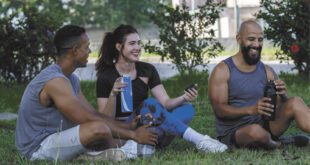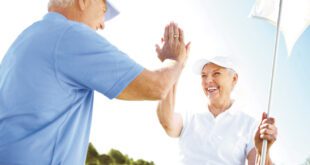 Saving Your Brain is a state-of-the-art facility that offers non-drug programs that offer viable solutions for almost any neurodevelopmental, behavioral, academic, psychological, or mental health issue. Currently we are seeing people from age 2 to age 88 and every age group in between. Some of our younger school age children and young adults we help have been diagnosed with conditions such as ADHD, Dyslexia, Social anxiety, OCD, ODD, and Autism Spectrum. We help children and adults who have been diagnosed with anxiety and depression. We work with people that have auto-immune issues. We help people who have had traumatic brain injuries or strokes. We also help aging adults improve their memory and balance and other symptoms associated with Alzheimer’s.
Saving Your Brain is a state-of-the-art facility that offers non-drug programs that offer viable solutions for almost any neurodevelopmental, behavioral, academic, psychological, or mental health issue. Currently we are seeing people from age 2 to age 88 and every age group in between. Some of our younger school age children and young adults we help have been diagnosed with conditions such as ADHD, Dyslexia, Social anxiety, OCD, ODD, and Autism Spectrum. We help children and adults who have been diagnosed with anxiety and depression. We work with people that have auto-immune issues. We help people who have had traumatic brain injuries or strokes. We also help aging adults improve their memory and balance and other symptoms associated with Alzheimer’s.
All of the above conditions except TBI, Strokes, and Alzheimer’s fall under the heading of “Functional Disconnection Syndrome”. There is no pathology in the brain, there is just a functional imbalance between the two hemispheres of the brain. We have found there are several common features in all the conditions that were mentioned earlier. There are some commonalities that are found in every significant academic, behavioral, psychological, or mental health issue. They are the following: retained primitive reflexes, a weakness in one or more of the three major sensory systems that develop and grow the brain – the postural/balance system, the vestibular system, or the oculomotor system, a weakness in either the left or right cerebellum, and a weakness in the opposite hemisphere. The retained primitive reflexes are associated with a hard -wired negative neurobehavior. This can make us a bit “quirky”. Integrating the primitive reflexes makes us less “quirky”. In the case of Alzheimer’s, there has been damage done in certain areas. Even when the brain has been injured, it often can re-route pathways to compensate.
Chronic anxiety, depression, and insomnia are symptoms that fall under the heading of “Functional Disconnection Syndrome”. These problems are associated with retained primitive reflexes and hemispheric brain imbalance. These symptoms are on the rise. The following are some up to date statistics on these maladies which are frightening!
General Anxiety Disorder affects 6.8 million adults or 3.1% of the U.S. population, yet only 43.2% are receiving treatment. Women are twice as likely to be affected as men. GAD often co-occurs with major depression.
Panic Disorder (PD) – PD affects 6 million adults or 2.7% of the U.S. population. Women are twice as likely to be affected as men.
Social Anxiety Disorder – SAD affects 15 million adults or 7.1% of the U.S. population. SAD is equally common among men and women and typically begins around age 13. According to a 2007 ADAA survey, 36% of people with social anxiety disorder report – experiencing symptoms for 10 or more years before seeking help.
Specific Phobias – Specific phobias affect 19.3 million adults or 9.1% of the U.S. population. Women are twice as likely to be affected than men. Symptoms typically begin in childhood; the average age of onset is 7 years old. Obsessive-compulsive disorder (OCD) and posttraumatic stress disorder (PTSD) are closely related to anxiety disorders, which some may experience at the same time, – along with depression.
• 27.3% of American adults have anxiety problems.
• Anxiety disorders affect 3.94% of the worldwide population.
• 41.7% of young adults (18 to 29 years) suffer from anxiety.
• 9.4% of children in the US have anxiety.
• 36% of teens experienced higher anxiety levels during the pandemic.
• 31% of college students have an anxiety diagnosis.
• The prevalence of anxiety disorders in the US is higher in women at 30.8% than in men at 23.5%.
• 7.1% of the US population has social anxiety disorder.
• 94% of the workers feel stressed out at work.
• The COVID-19 pandemic caused a 25% increase in anxiety prevalence.
• 60.76% of healthcare workers felt higher fear and anxiety levels due to COVID-19 virus exposure.
• Only 36.9% seek treatment for anxiety disorders.
• Based on diagnostic interview data from the National Comorbidity Study Replication (NCS-R),
– An estimated 19.1% of U.S. adults had any anxiety disorder in the past year.
– Past year prevalence of any anxiety disorder was higher for females (23.4%) than for males (14.3%).
• An estimated 31.1% of U.S. adults experience any anxiety disorder at some time in their lives.
• Anxiety levels usually peak between the ages of 40 to 59.
• Panic disorders affect over 6 million people in the US.
• Antidepressant use increases with age, with 19% of those over 60 taking them.
• 3.6% of the population have anxiety, as per anxiety statistics worldwide from 2020.
• Four in ten US adults have depression or anxiety symptoms due to the pandemic.
• Almost 3%–5% of children have math anxiety, as per anxiety in children statistics.
• 8% of children and teenagers worldwide have an anxiety disorder.
• 2.2 million Americans have obsessive-compulsive disorder (OCD).
• 25 million people in the EU have anxiety, as per stats on anxiety prevalence.
• 19 million Americans have specific phobias.
The prevalence of major depressive episode was highest among women whose rates of depression during their lifetimes climbed from 26.2% in 2017 to 36.7% in 2023. Rates of those with current depression increased from 17.6% to 23.8% over the same period. By comparison, men with depression during their lifetimes saw a smaller increase from 17.7% in 2017 to 20.4% in 2023.
50 to 70 million Americans have some type of sleep disorder. 30% to 40% of adults in the US complain of insomnia symptoms. 30% have short-term insomnia, while 10% have chronic insomnia. 1 in 4 women and 1 in 5 men have insomnia.
Correcting these imbalances/weaknesses changes the brain’s functions and unwanted symptoms markedly reduce or go away. The corrections occur by having the person do a sensory/motor activity repetitively and frequently, while being stimulated by vibration, electrical stimulation, specific sounds, specific smells and cold laser.
Our brains are divided into some 52 Brodmann areas, named after Dr. Brodmann, who mapped them out over 115 years ago. Each area controls certain brain functions and most of these areas connect to other Brodmann areas forming networks. The network on one side of the brain could be like a 6 lane highway but the corresponding network on the opposite side of the brain may be like a farm road. This imbalance between the hemispheres produces symptoms that we label as things like inattention, poor focus, impulsivity, anxiousness. If we do a specific sensory/motor activity (an activity that involves us seeing something, hearing something, or feeling something and then reacting to it) – for example like keeping time with our hand or foot to the sound of a cowbell. When it is coupled with sensory inputs of vibration, light, and electrical stimulation on one side of the body, it creates neuroplastic changes in the networks on the opposite side of the brain. Over time, as this sensory/motor activity is repeated the changes become “sticky”, meaning they stick and are now permanent. This is how neuroplasticity in the brain works. Neuroplasticity is the creation of new pathways or expansion of existing pathways.
Think about going to the gym to work out. There are stations for your chest, stations for your back, stations for your legs, stations for your arms, and stations for cardiovascular fitness. When your muscles are fairly balanced you can use a barbell for things like bench press or curls. What happens if you are in an accident and you break one arm and it was in a cast for 8 weeks? You could not use the barbell to lift weights like before because the casted arm is too weak. You would have to build the weaker arm up using dumb bells or pulleys until it got stronger. Then you could use the bar bell again. At Saving Your Brain, we have different stations for working different networks in your brain. We intentionally work only the weaker side to help it “catch up” to the stronger side. The brain responds positively to specific light, sound, and vibrational frequencies.
How well does it work? It works great! People are amazed by the changes. Please visit our website for more information and view our many testimonials. We are located on Fletcher across from USF.
Saving Your Brain was founded by Kelly Miller NMD who has a background in Chiropractic, Acupuncture, Naturopathy and post graduate studies in Functional Medicine and Neurodevelopmental Brain, and Neurofeedback. His 44 years of experience assessing and treating over 16, 000 patients make him the ideal “Brain Health Coach”. His book, Saving Your Brain: Causes, Prevention, and Reversal of Alzheimer’s/Dementia was an Amazon Best Seller.
3500 East Fletcher, Suite 120,
Tampa, Florida 33613
816-210-6913
www.savingyourbrain.com
info@savingyourbrain.com
 Central Florida Health and Wellness Magazine Health and Wellness Articles of the Villages
Central Florida Health and Wellness Magazine Health and Wellness Articles of the Villages



